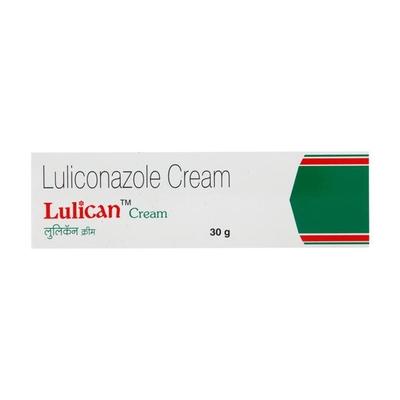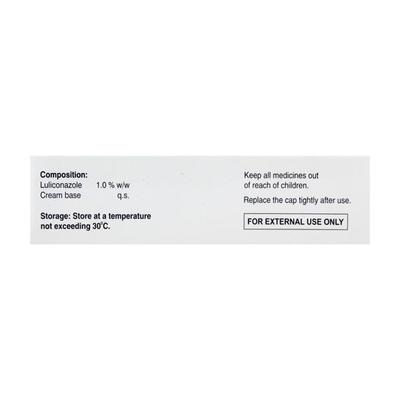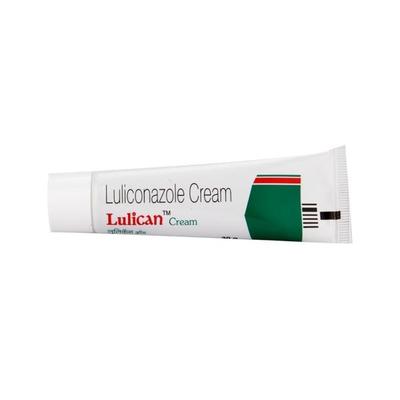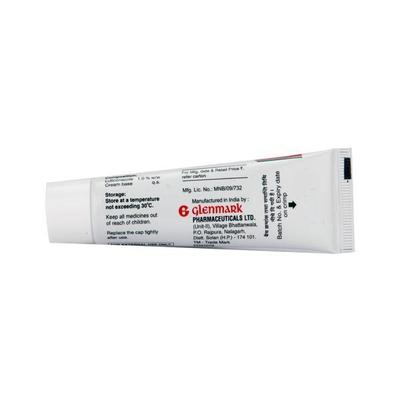

Netmeds First Membership
Quick Links
Introduction About LULICAN 1%W/W CREAM
Lulican Cream is a topical antifungal agent used to manage fungal infections of the skin such as ringworm of the feet between the toes (tinea pedis), ringworm of the genitals, inner thighs and buttocks (tinea cruris), or ringworm of any part of the body (tinea corporis). It contains Luliconazole as an active ingredient which kills the disease-causing fungi.
Luliconazole manages the growth of various types of fungi by managing the ergosterol synthesis which disrupts the production of the fungal cell membranes. As a result, it fights against the fungal infection of the skin and stops its growth, thereby relieving the symptoms of fungal infection.
Apply Lulican Cream as advised by your doctor. It is for external use on the surface of the skin only. Along with management, follow proper hygiene methods. Consult your doctor if you experience any allergic reactions after applying the creams.
Key Composition
- Luliconazole
Therapeutic Uses Of LULICAN 1%W/W CREAM
Manages fungal infections of the skin such as:
- ringworm of the feet between the toes (tinea pedis)
- ringworm of the genitals, inner thighs and buttocks (tinea cruris)
- ringworm of any part of the body (tinea corporis)
Side Effects Of LULICAN 1%W/W CREAM
Lulican Cream may cause skin irritation, redness, itchy rashes, and swelling on the applied area. Consult your doctor if you notice any such side effects while using this Cream.
Safety Advice
- Always apply Lulican Cream as advised by your physician
- It is for external use only
- Clean and dry the area where the cream will be applied
- Using the tip of your finger, apply a thin layer of the cream to the affected and surrounding areas of the skin
- Do not exceed the recommended daily dose
- Do not use Lulican Cream if you are allergic to Luliconazole or any other of its ingredients
- It should be used with caution in pregnant and breastfeeding women. Therefore, consult your doctor for advice before use
- The safe and effective use of this cream in children and adolescents (below 18 years) is not known. However, consult your doctor for advice
- Inform your doctor about all the medicines you use, including prescription, over-the-counter medications and herbal supplements
More Information
- Keep Lulican Cream out of the sight and reach from children
- Store at room temperature
FAQs About LULICAN 1%W/W CREAM
Q: Can Lulican Cream be used daily?
A: Apply Lulican Cream as advised by your physician. Consult your doctor and apply as long as advised by your physician. If there is no improvement in your condition or if your symptoms worsen after taking this medicine, please contact your doctor.
Q: What are the possible side effects of Lulican Cream?
A: Lulican Cream may cause skin irritation, swelling, redness or itchy rashes on the applied site. Consult your doctor if any of the symptoms worsen or persist.
Q: Can Lulican Cream be used for athlete’s foot?
A: Yes. Apply a thin layer of Lulican Cream to the infected areas of the skin and roughly around the surrounding healthy skin. It is generally recommended for applying once a day for two weeks if you have an athlete's foot (tinea pedis). However, consult your doctor for advice.
Q: Can Lulican Cream be used in children?
A: Lulican Cream's safety and efficacy in children and adolescents (under the age of 18) are unknown. However, consult your doctor for advice.
Q: Can Lulican Cream be used in pregnant women?
A: Lulican Cream should be used with caution in pregnant and breastfeeding women. However, consult your doctor for advice before use.
Q: Can I stop using Lulican Cream if my symptoms of the disease subside?
A: If the symptoms of your disease subside, you may stop using Lulican Cream as recommended by your doctor. Consult your doctor for advice.
References
1. https://dermnetnz.org/topics/tinea-pedis
2. https://dermnetnz.org/topics/tinea-cruris
3. https://dermnetnz.org/topics/tinea-corporis
4. https://dailymed.nlm.nih.gov/dailymed/fda/fdaDrugXsl.cfm?setid=7ccda3ba-9c98-468d-83c6-7f0cc7c88c33&type=display#s6.1
5. https://www.accessdata.fda.gov/drugsatfda_docs/label/2013/204153s000lbl.pdf
6. https://cdscoonline.gov.in/CDSCO/Drugs











